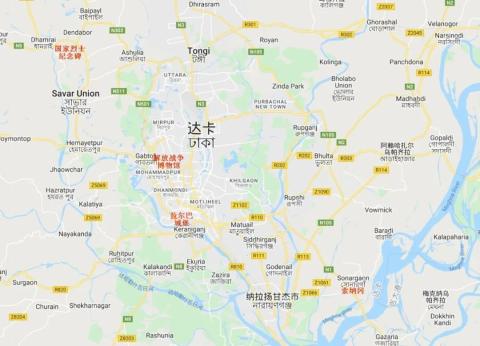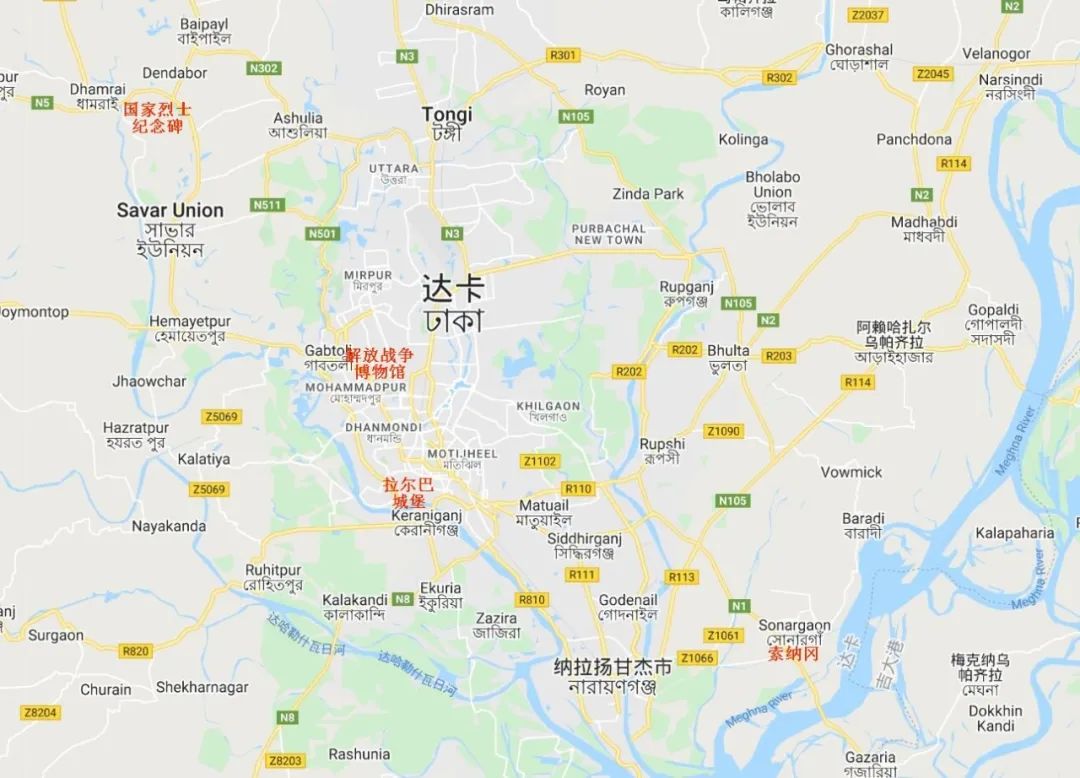
Back in Dhaka, there is still more than one day left, and I plan to visit the remaining famous attractions around the city.

First I took the bus to Sonargaon Garden
Sonargaon is located 30 kilometers southeast of Dhaka. Sonargaon was the old capital of the dynasty before the 13th century and the later capital of the Sultanate. In 1608 AD, the prince of the Mughal Empire, Ishim, also established the state capital here. , the textile industry flourished, and Sonargaon became the capital city in the eastern part of the South Asian subcontinent. Later it became the capital of the British colonial state of Undivided Bengal, leaving many historical buildings and gardens.
The garden has a lot of water





There are also gardens and walks



Sonargaon Heritage Museum is situated in the garden, like an embellishment on the green space and water.


small shop selling food

And dyed eggs

Bro

To the north of the garden is Panam Nagar, a heritage street called Sonargaon Road. This street was built by wealthy Indian textile merchants in the 19th century and was once home to many wealthy people. A fire destroyed the area. Now only ruins remain. There are 56 historical buildings here, most of which are weathered and damaged, but the prosperity of that year can be vaguely seen from the remaining ruins. This place has become a favorite of photographers, and the ruins reflect a kind of desolate beauty.











Then I took the bus to the National Martyrs Monument.


Bangladesh National Martyrs’ Memorial is located 35 kilometers northwest of Dhaka. Built to commemorate the martyrs who sacrificed their lives for the liberation of Bangladesh, the monument is mainly composed of seven triangular faces and is about 45 meters high.





Next to the monument are a pool and an altar




A mother and son who wanted to take a photo with me

Back in the city, I visited the Bangladesh Liberation War Museum
Bangladesh was originally a part of Pakistan. From March 26 to December 16, 1971, the armed conflict between East Pakistan and West Pakistan, including the India-Pakistan War of the same year, was called the Bangladesh Liberation War. The war lasted for 9 months. , the result of the war was that East Pakistan became independent Bangladesh.

The Liberation War Museum was established to commemorate the Bangladesh Liberation War. It was officially opened to the public on March 22, 1996. There are more than 10,000 collections in the museum. The works displayed on the first floor mainly reflect Bangladesh’s early opposition to British colonial rule. The history of the independence movement; there is also an introduction to the life of Sheikh Mujibur Rahman, the national leader and prime minister of Bangladesh (1972-1975), and an introduction to the key events in the 1971 decision by the alliance led by him to establish an independent Bangladesh. . The second floor displays the War of Liberation. In addition, the museum also displays the weapons once used by the Mukti Bahini army, the important deeds of some famous soldiers and the impact of these deeds on the entire War of Independence.




The museum now also holds concerts

The next morning I walked to Lalbagh Castle and looked at the street scene of Dhaka.





Lalbagh Fort was built in 1677 by Shaista Khan, the seventh king of the Mughal Empire. It was originally used as a palace. Unfortunately, the sudden death of the young princess Babi Pari made the king give up the idea of continuing to build Lalbagh Fort. The tomb of Princess Babi Pari. The complex also includes the Larba Mosque, a historical museum and a peaceful castle garden.

Lalbagh Fort is known as the Taj Mahal of Bangladesh. Its symmetrical Islamic gardens and pools, and exquisite water supply facilities make the layout of this castle built of red sandstone and bricks very similar to the Taj Mahal in India. But the size is much smaller. Standing at the highest point and looking down, the honey-colored Dhaka is spread out in front of you. The breeze from the river occasionally blows, and the smell of spices in the air is still like the Mughal era in the 17th century. scene.
Tomb of Princess BabiPari




Museum and interior









mosque


gardens and walls









portrait


After visiting Lalbagh Fort, my 10-day trip to Bangladesh came to an end, and then I took the train to the airport.



Take an Air India flight and transfer via Kolkata to Yangon, Myanmar, where you will begin your 20-day trip to Myanmar.


